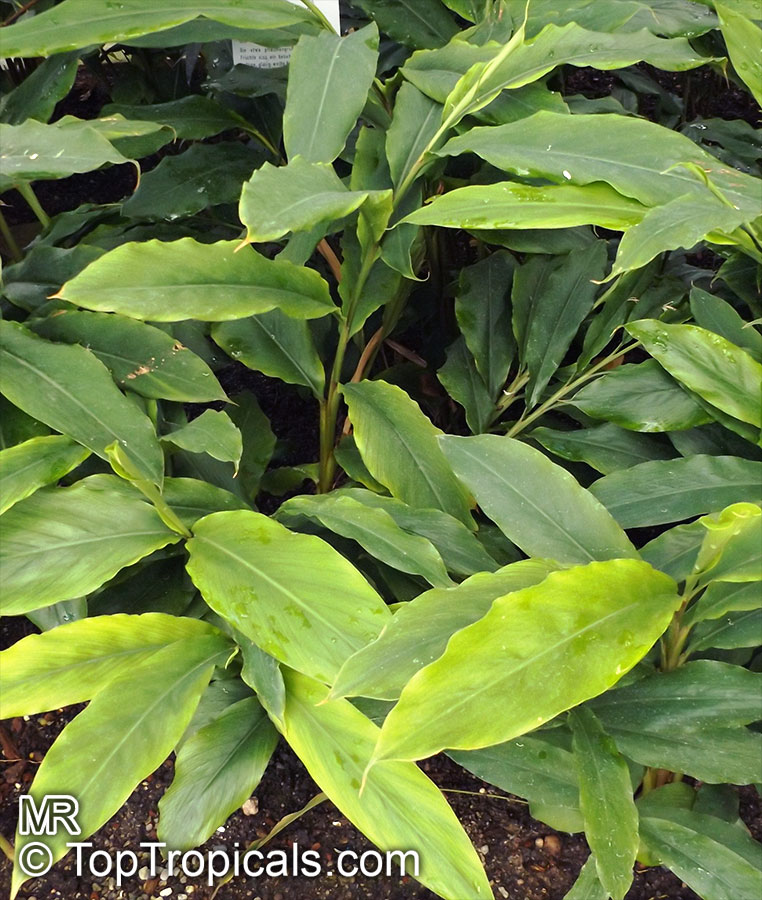Pictogram Guide · Mouse over pictogram for definition
Alpinia officinarum
Lesser GalangalFamily: Zingiberaceae









Alpinia officinarum (Lesser Galangal) is a plant, typically measuring 5-10 feet in height. It prefers semi-shade and regular watering, but will tolerate moderate water during dry spells. The flowers are a cluster of pink, white, or off-white blossoms, giving a beautiful display.
It is not just an ornamental plant. In China, it is also valued for its ethnomedical properties, used as a spice or a herb. Grown across USDA zone 9-11, it can easily be grown in pots in cold regions.
For proper care and growth, this plant requires a slightly acidic and well-drained soil. Provide light shade if grown outdoors, and ensure the pot is well-drained for optimal water retention. Water the plant regularly, but avoid excessive wetting of the soil. It will thrive under the right conditions and can last for years.
Fertilize Alpinia officinarum with a balanced formula throughout the growing season.
Alpinia officinarum is a beautiful, versatile plant. With proper care and maintenance, it will thrive and bring a splash of color and fragrance to any garden.
The rhizomes, known as galangal, are valued for their spicy flavor and aromatic scent. These are used throughout the world in curries and perfumes.
Similar plants:
- Alpinia argentea (Yellow Ginger Lily )
- Alpinia formosana x zerumbet Variegata (Variegated ginger)
- Alpinia galanga, Languas galanga (Galanga Root, Galangal, Thai Ginger, Laos )
- Alpinia gigantifolia, Zingiber gigantifolium (Red Ginger Lily)
- Alpinia henryi 'Pink Perfection' (Pink porcelain lily)
- Alpinia luteocarpa (Red Bamboo Ginger)
- Alpinia malaccensis (Rathkihiriya)
- Alpinia nutans, Alpinia speciosa (Shell ginger, Pink porcelain lily, Narrow-Leaf Cinnamon Ginger, Shellflower, Dwarf cardamom, False cardamom)
- Alpinia purpurata (Red Ginger Lily, Ostrich Plume, Red Cone Ginger)
- Alpinia rugosa (Evergreen Broadleaf Ginger)
